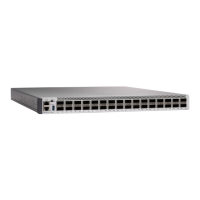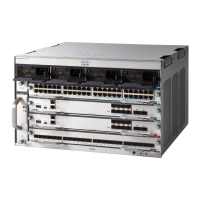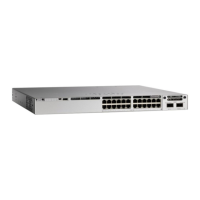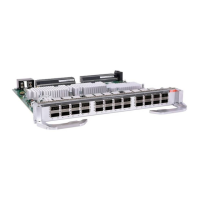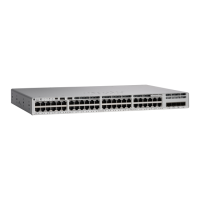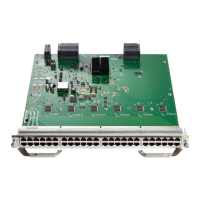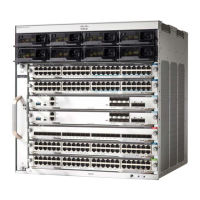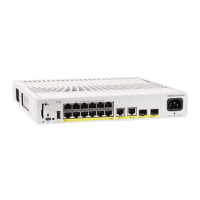If any devices in the physical path are transparent to CDP, the switch cannot identify the path through
these devices.
• A device is reachable from another device when you can test connectivity by using the ping privileged
EXEC command. All devices in the physical path must be reachable from each other.
• The maximum number of hops identified in the path is ten.
• You can enter the traceroute mac or the traceroute mac ip privileged EXEC command on a device
that is not in the physical path from the source device to the destination device. All devices in the path
must be reachable from this switch.
• The traceroute mac command output shows the Layer 2 path only when the specified source and
destination MAC addresses belong to the same VLAN. If you specify source and destination MAC
addresses that belong to different VLANs, the Layer 2 path is not identified, and an error message appears.
• If you specify a multicast source or destination MAC address, the path is not identified, and an error
message appears.
• If the source or destination MAC address belongs to multiple VLANs, you must specify the VLAN to
which both the source and destination MAC addresses belong. If the VLAN is not specified, the path is
not identified, and an error message appears.
• The traceroute mac ip command output shows the Layer 2 path when the specified source and destination
IP addresses belong to the same subnet. When you specify the IP addresses, the device uses the Address
Resolution Protocol (ARP) to associate the IP addresses with the corresponding MAC addresses and the
VLAN IDs.
• If an ARP entry exists for the specified IP address, the device uses the associated MAC address and
identifies the physical path.
• If an ARP entry does not exist, the device sends an ARP query and tries to resolve the IP address.
If the IP address is not resolved, the path is not identified, and an error message appears.
• When multiple devices are attached to one port through hubs (for example, multiple CDP neighbors are
detected on a port), the Layer 2 traceroute feature is not supported. When more than one CDP neighbor
is detected on a port, the Layer 2 path is not identified, and an error message appears.
• This feature is not supported in Token Ring VLANs.
• Layer 2 traceroute opens a listening socket on the User Datagram Protocol (UDP) port 2228 that can be
accessed remotely with any IPv4 address, and does not require any authentication. This UDP socket
allows to read VLAN information, links, presence of particular MAC addresses, and CDP neighbor
information, from the device. This information can be used to eventually build a complete picture of the
Layer 2 network topology.
• Layer 2 traceroute is enabled by default and can be disabled by running the no l2 traceroute command
in global configuration mode. To re-enable Layer 2 traceroute, use the l2 traceroute command in global
configuration mode.
IP Traceroute
You can use IP traceroute to identify the path that packets take through the network on a hop-by-hop basis.
The command output displays all network layer (Layer 3) devices, such as routers, that the traffic passes
through on the way to the destination.
System Management Configuration Guide, Cisco IOS XE Amsterdam 17.2.x (Catalyst 9500 Switches)
317
Troubleshooting the Software Configuration
IP Traceroute
